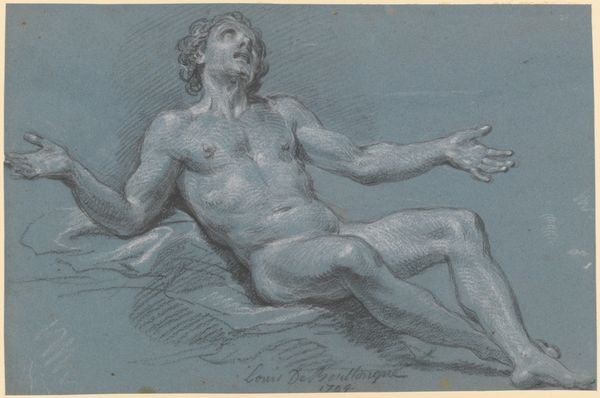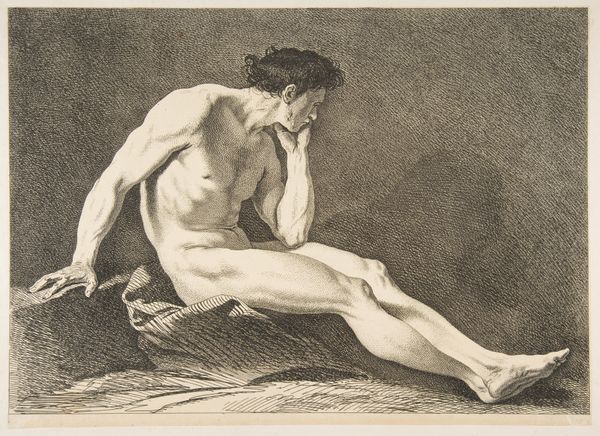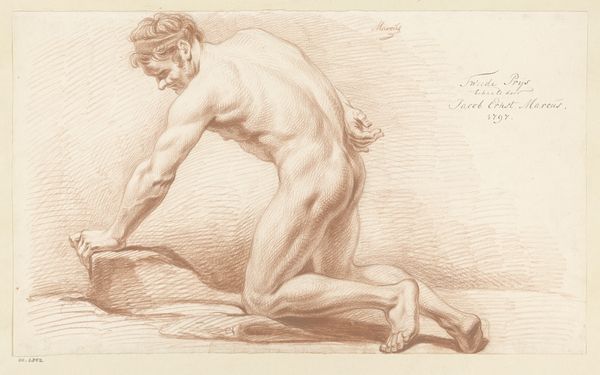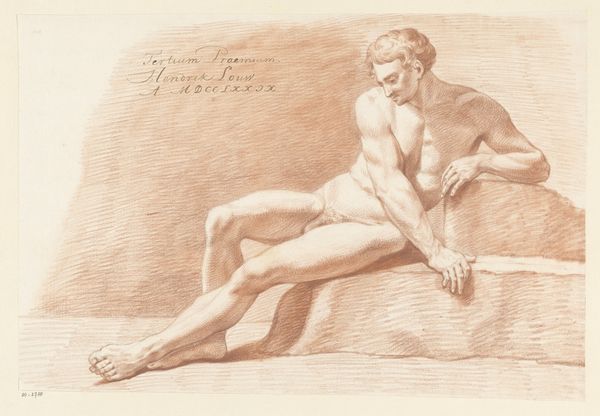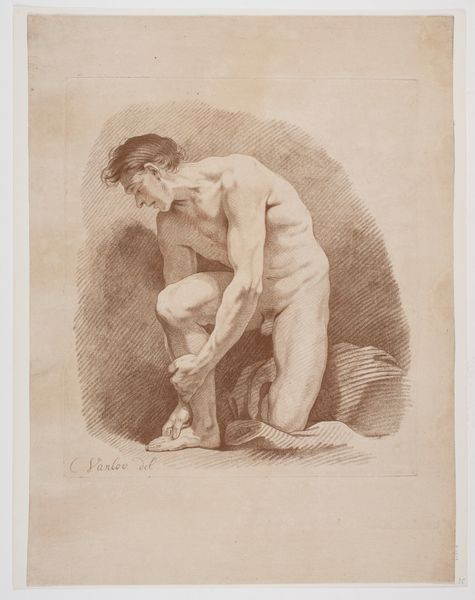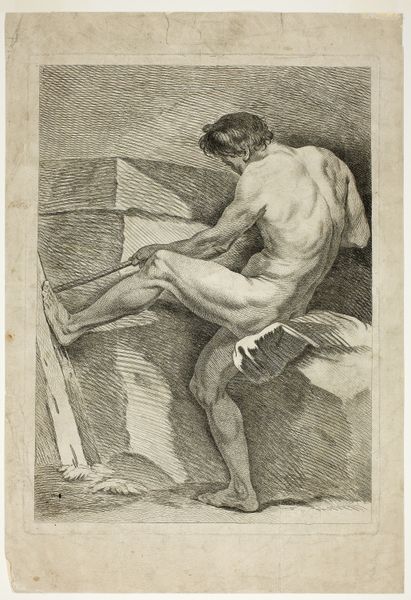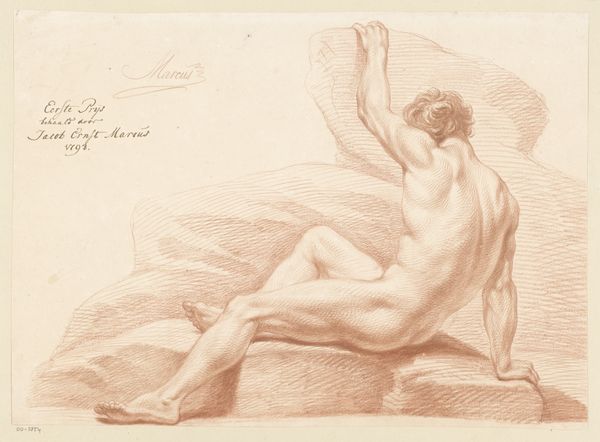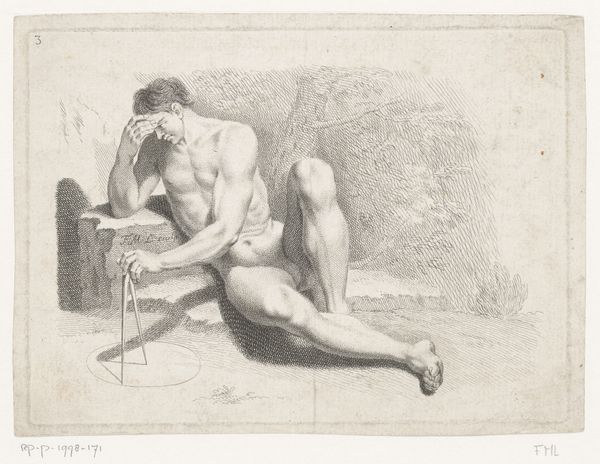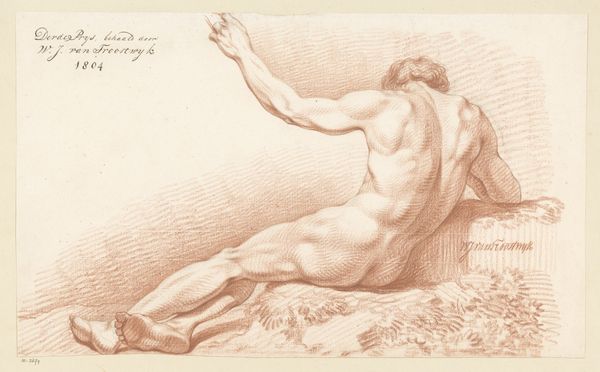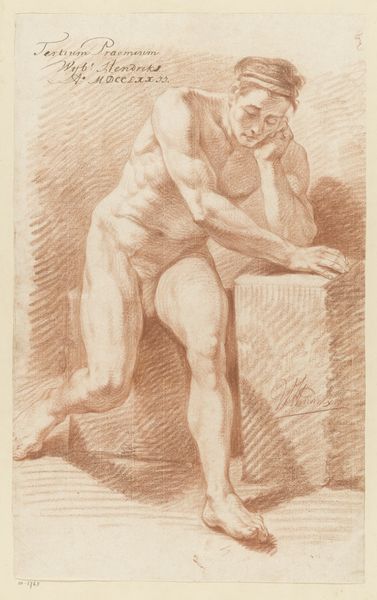
drawing, print
#
drawing
# print
#
classical-realism
#
figuration
#
history-painting
#
academic-art
#
nude
#
male-nude
Dimensions: 15 5/8 x 19 15/16 in. (39.7 x 50.6 cm)
Copyright: Public Domain
Editor: Here we have Louis Lagrenée’s “Seated Male Nude,” dating sometime between 1735 and 1805. It appears to be a drawing, or perhaps a print? I'm struck by the figure’s contemplative pose. It's melancholic almost, like a classical sculpture lost in thought. What stands out to you? Curator: The image resonates with me on the level of memory and history. Think of how many artists, going all the way back to antiquity, have grappled with depicting the male nude. He's seated, pensive...what symbols of the classical world are conjured up here, in your opinion? Does this carry on or reinvent certain ideals? Editor: Well, the pose makes me think of depictions of philosophers and thinkers, the "thinker" pose, almost, but... secular? I am not sure. Are there specific symbols at work here that go beyond that generalized feeling? Curator: Indeed, beyond that almost universal trope of the pensive intellectual. The fact that it’s a nude speaks volumes. Consider the loaded symbolism of the nude body in Western art history – it’s been used to represent heroism, vulnerability, beauty, and truth, but also subverted for other narratives. What is communicated through his very ordinary musculature, caught in this state of... introspection? Editor: It feels very personal, but also archetypal. It's an individual man, but he's also supposed to represent something greater. The history painting tag suggests the body might represent a historical figure, divested of the grandeur or the battlefield. Curator: Precisely! Lagrenée’s choice to depict him thus engages a cultural dialogue about heroism, intellect, and the human condition. Is this more of a historical or symbolic depiction in your mind? Editor: I'd lean toward symbolic. The classical allusions are too strong to ignore, even if it feels… deflated. Curator: I agree. And that "deflation," as you call it, might just be Lagrenée’s way of commenting on those very classical ideals. Thank you for highlighting that potential duality. Editor: Fascinating! It’s much more than just a life drawing, then. There’s a whole world of historical and cultural baggage informing it.
Comments
No comments
Be the first to comment and join the conversation on the ultimate creative platform.

